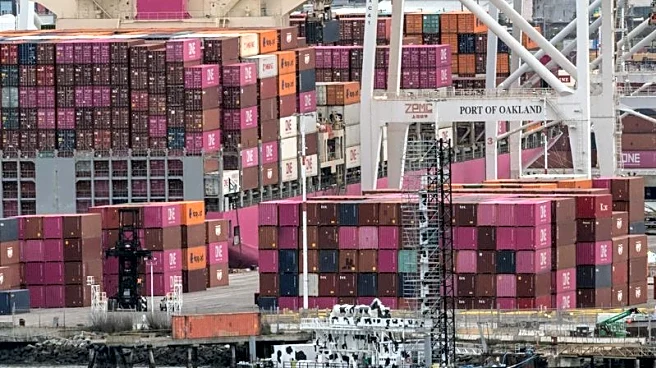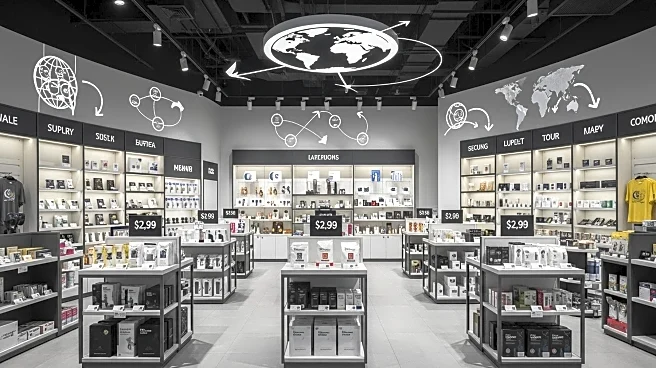What's Happening?
Best Buy is facing significant challenges due to the 2025 U.S. tariff escalations, which have reached up to 145% on Chinese imports. As a major player in the global electronics supply chain, Best Buy has implemented strategic measures to counteract these risks. The company has reduced its reliance on Chinese sourcing from 55% to 30-35% by shifting production to countries like Vietnam, India, and South Korea. Additionally, Best Buy has accelerated shipments to avoid sudden duty hikes and encouraged suppliers to absorb incremental costs. Despite these efforts, the company reported a 2.9% decline in comparable sales for Q3 2025, attributing tariffs as a key factor affecting sales, particularly in appliances and home theater categories. Best Buy's full-year revenue guidance has been adjusted to $41.1-$41.9 billion, reflecting ongoing uncertainty.
Why It's Important?
The tariff situation poses a significant threat to Best Buy's business model, which operates in a sector with inherently thin product margins. Unlike competitors such as Walmart, which sources a majority of its merchandise domestically, Best Buy's reliance on global electronics manufacturing makes it more vulnerable to geopolitical and regulatory shifts. The company's strategic moves to diversify sourcing and enhance omnichannel agility are crucial for maintaining its market position. However, the persistent tariff pressures could lead to increased costs and reduced profitability, impacting consumer prices and demand. Best Buy's ability to navigate these challenges will be critical in determining its long-term resilience and competitiveness in the retail sector.
What's Next?
Best Buy's future strategies will likely focus on further diversifying its supply chain and enhancing operational agility. The company may accelerate its shift to nearshoring and invest in deeper integration with U.S. and Mexican manufacturing to provide further insulation from tariff impacts. Expanding its services and digital offerings, while maintaining a strong omni-channel presence, could help diversify revenue streams beyond hardware sales. Monitoring Best Buy's progress in reshoring production and the sustainability of its services segment will be key for investors and stakeholders.
Beyond the Headlines
The broader implications of Best Buy's situation highlight the fragility of global supply chains in the face of geopolitical tensions and trade policy shifts. The company's strategic resilience serves as a case study for other retailers navigating similar challenges. The ongoing tariff pressures underscore the need for businesses to adapt to changing regulatory environments and consumer demand dynamics. Best Buy's experience may influence industry-wide strategies for managing trade policy risks and maintaining competitive advantage.













